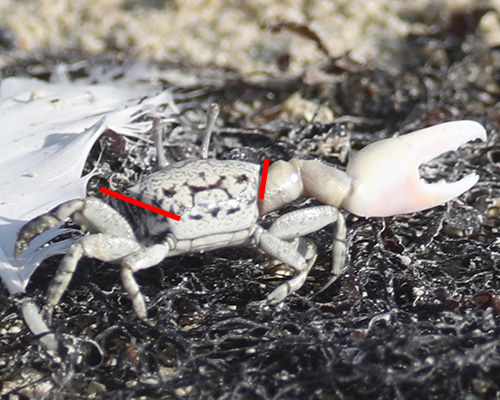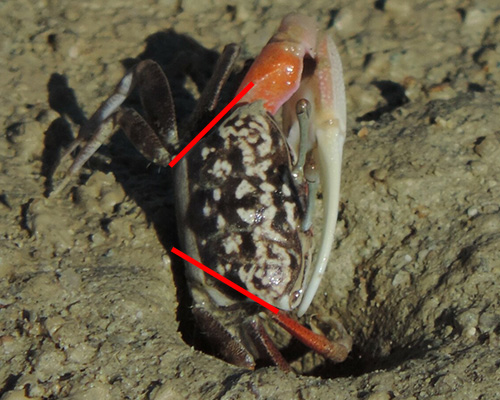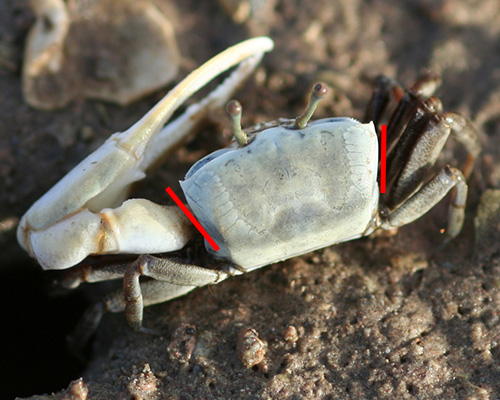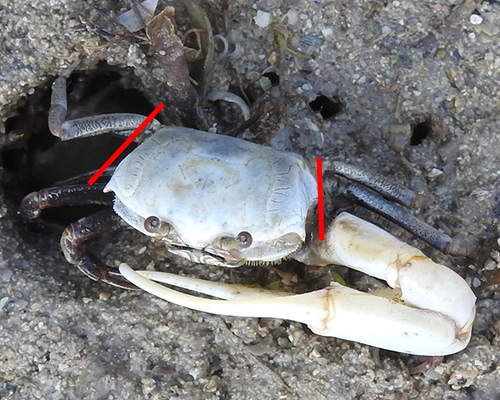
This guide is designed for identification “in the field” where you might be looking at live crabs by eye or through binoculars or from photographs. I will generally try to avoid characters that will require you to physically catch the crab, although I may mention a few for secondary verification. It does not include the more strict taxonomist-style characters that may only be visible under a microscope or via dissection. It is also assumed that the individuals are living, as death (and even capture) can cause dramatic color change.

This is a guide to the fiddler crabs of the southeastern Persian Gulf and southern Gulf of Oman, including the eastern United Arab Emirates and northern Oman. Fiddler crabs are absent from most of the southern Persian Gulf (including the coasts of northeastern Saudi Arabia, Bahrain, Qatar, and much of the UAE), likely because of extreme salinity. Along the southern shoreline, they only appear in the easternmost part of the gulf, starting around Dubai.
This small region consisting of the southeastern edge of the Persian Gulf and the southern Gulf of Oman represents a faunal transition zone between the Red Sea and eastern African species to the south and the Persian Gulf species found on the northern coast. There are five species known from this region, one of which may be rare.
A number of features can be used to distinguish among these species, but a good place to start is to look at the distance between the base of the eyestalks. Fiddler crabs tend to split into two groups, those with the eyestalks very close together (“narrow front”) and those with the eyestalks separated a bit more (“broad front”). Three of these species (Austruca albimana, Austruca iranica, and Cranuca inversa) are broad front species, while the other two, Gelasimus hesperiae and Gelasimus tetragonon, are narrow front species. The two narrow front species are easy to tell apart (both from the broad front species and each other), while the three broad front species are much more difficult to distinguish.
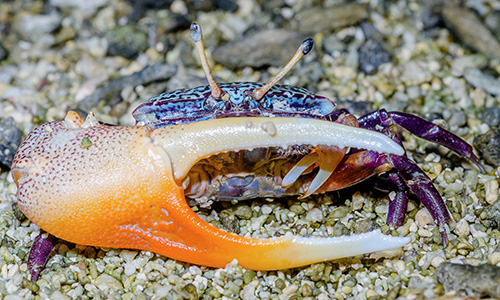
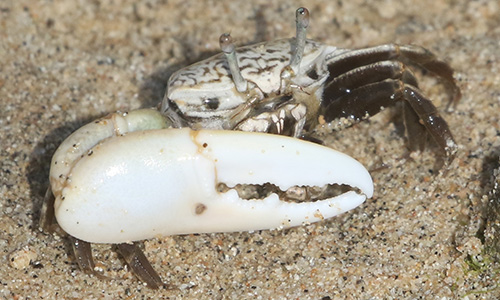
Gelasimus tetragonon has been reported from the United Arab Emirates, but otherwise appears to be very rare in this region. If should be readily obvious if found, however, as it will usually stand out due to its blue coloration.
Gelasimus tetragonon tends to have a predominantly blue and black carapace, frequently speckled, and bright red legs (which occasionally may be darker). The large claw is generally orange, with a noticeably darker red spot near the base of the pollex. The dactyl (upper finger) is usually mostly white. Gelasimus tetragonon frequently has brown spots on the top part of the hand of the claw.
Gelasimus tetragonon has a lot of variability that can overlap with other species. It is the only species in this region which would generally be blue, but in some cases, its carapace can lighten so that there is almost no blue present, just a cream or pale orange with black markings. The pattern of the colors on the carapace can vary from stripes or blotches to tiny spots. The pale/white forms of Gelasimus tetragonon are more likely to be confused with other species.
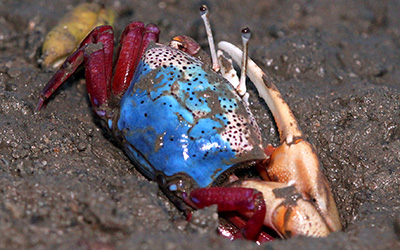
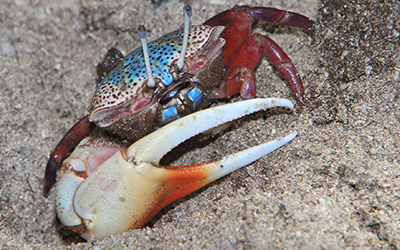
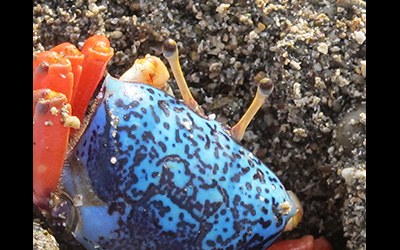
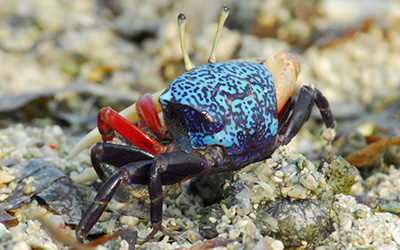
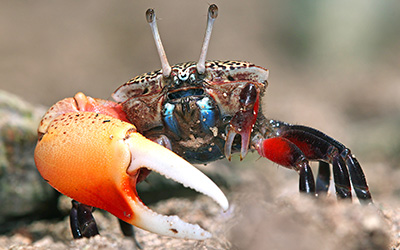
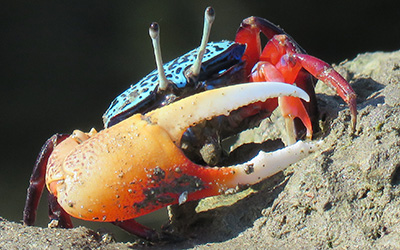
Gelasimus hesperiae is a narrow front species with a white or pale greenish-brown carapace and a distinctively shaped large claw. It never has any blue and should be readily distinguishable from all of the other species. The dactyl on the large claw is usually white or pink, while the rest of the claw usually ranges from orange to pale yellow. The dactyl is relatively thick and straight for about half its length before clearly curving to a thick point. The pollex will frequently have two very clear large teeth, one about midway along the length and one near the tip, although one or both can be absent. It has large bumps (tubercles) on the hand of the claw and will often have a noticeable groove along the base of the pollex.
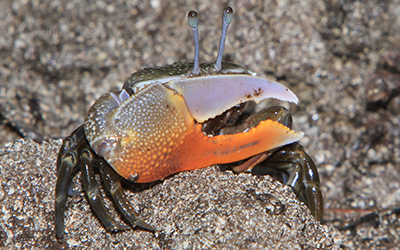
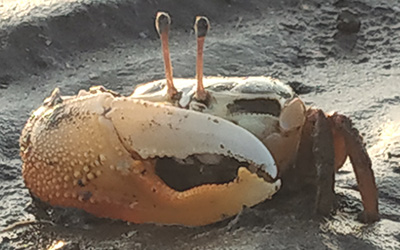
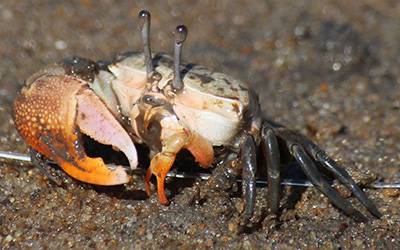
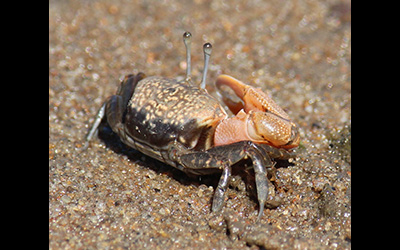
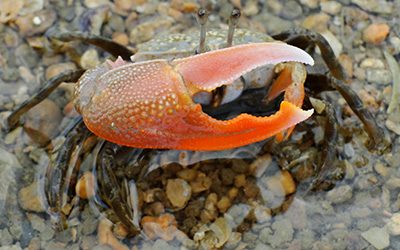
Male Cranuca inversa should be the easiest of the broad front species to identify so long as one can get a good look at the large claw. In this species, the tip of the dactyl (the upper finger) on the large claw has a forked shape which is completely unique to this species. Compare the tip of the upper finger of the claw in the “broad front” photo above to those in the other photos on this page.
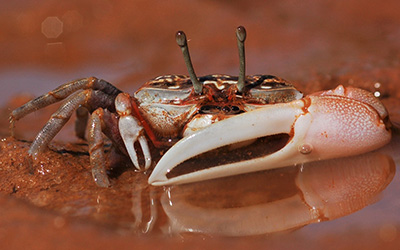
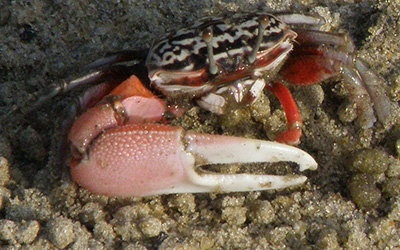
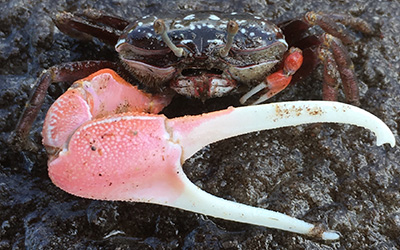
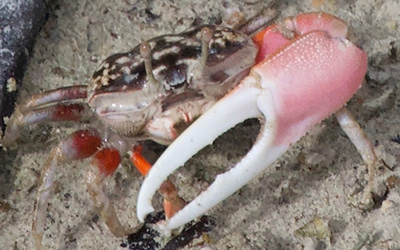
Beyond the shape of the dactyl tip, the “hand” and arm of the large claw tend to be pale pink, while the fingers are usually white. The carapace is generally a mix of black and white, usually—although not always—with more black than white. Unfortunately, this color scheme is very similar to the other two broad front species, so without a good view of the claw, it can be very hard to distinguish between them in the field. To my knowledge, there is no reliable way to tell females of these three species apart in the field.
Austruca albimana is very similar in color to Cranuca inversa but has the standard pointed tip to the upper finger of the claw. Its carapace is generally white or a mix of white and black, its limbs range from dark red to white, and the arm with the large claw may be white or orange or red. More often than not, the large claw of Austruca albimana is entirely white, or at most has only a touch of pale color; in contrast, the large claw of Cranuca inversa usually has pink on the hand, although pure white claws have been observed.
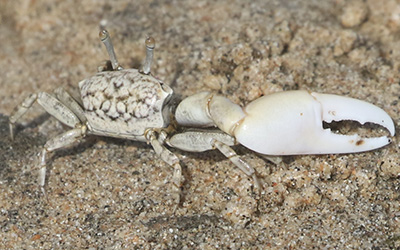
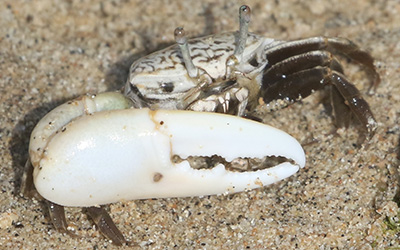
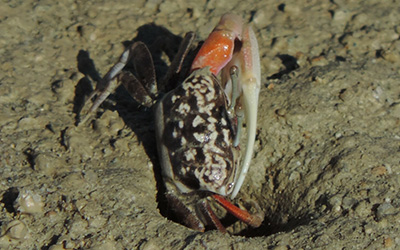
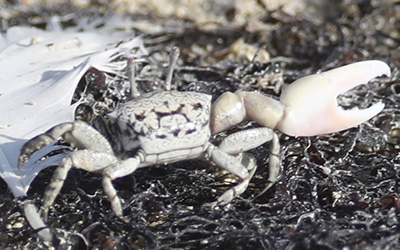
Austruca iranica is all-but identical in appearance to Austruca albimana. It has a carapace that is usually solid white (occasionally with a mix of white and gray/black), its limbs range from dark red to white, and the large arm and claw are usually white (sometimes with a bit of subtle pale color). It is not clear if there are any consistent color differences between them.

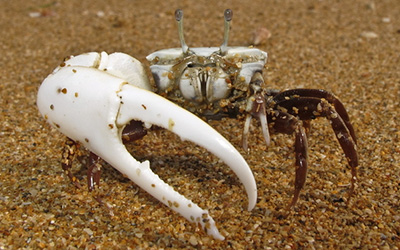
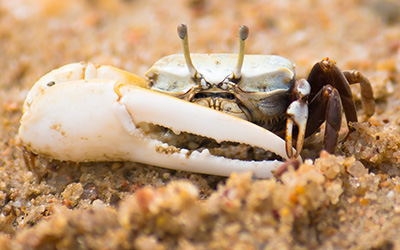
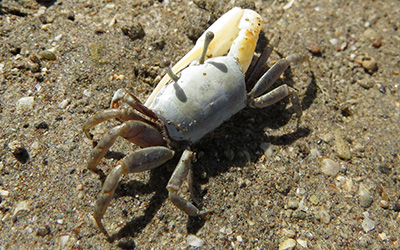
One feature that can supposedly separate Austruca albimana from Austruca iranica is a subtle difference in the shape of the carapace as seen from above. The sides of the carapace (as one moves from the front corners toward the back) converge more strongly in Austruca albimana than they do in Austruca iranica. This character is difficult to see in most cases, and I am not entirely sure it is reliable enough to be correctly distinguish the species in all cases.
